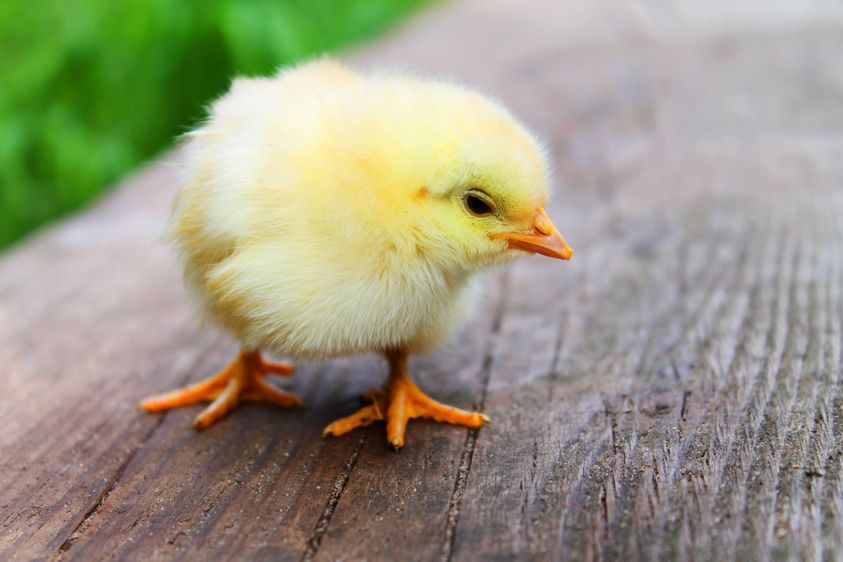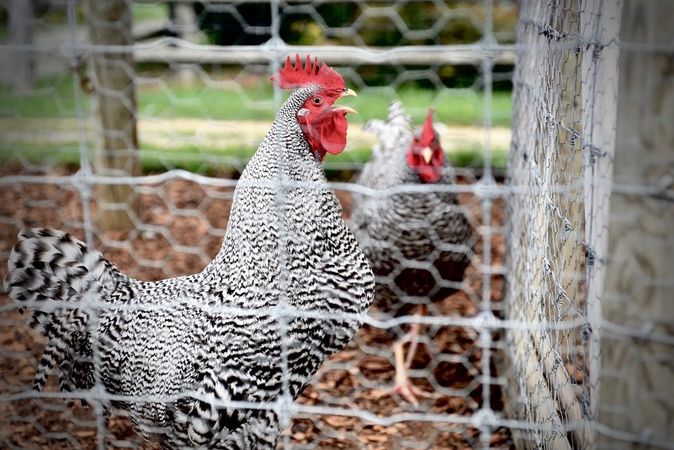Adding chickens to your farm or backyard is a great way to ensure you have fresh eggs every morning. While being relatively easy animals to maintain when they are adults, mortality rates are high when they are chicks. Success hinges on having the right equipment and making sure your chicks have a healthy diet and are properly cared for. Following some basic steps to keep the babies healthy will ensure your chicks grow into healthy and happy adults.
Brooder
Before you head off to purchase your chicks or receive them in the mail, you need to set up a brooder. A brooder is a box of some sort that provides bedding, feed, water and heat for the first few weeks of your chicks’ lives. You can use anything from a cardboard box to a puppy’s playpen. The goal is to keep them safe from drafts, children and any family pets you might have. Bedding for the chicks should be absorbent and changed daily. Pine shavings are a favorite choice to use for bedding because of their absorbance. Using newspaper should be avoided. It’s too slippery for the chicks and can cause spraddle leg.
Heat
A chick’s feathers haven’t come in yet and they can get chilled easily, which can lead to death. To prevent this, place a heat lamp inside the brooder on the opposite side of the feeder. A red bulb lamp is preferred over a white bulb to reduce aggression and pecking issues. The temperature should be around 95 degrees Fahrenheit for the first week then reduced by five degrees each week until they are ready to be in the coop.
Food and Water
Chicks need to eat starter food for the first eight weeks. You will have a choice between medicated and non-medicated. The medicated feed will give them immunity to coccidiosis, which is the number one killer of baby chicks. It’s also a good idea to add a cup of coarse dirt to the feed. Like adult hens, chicks need grit in their diet and this will help them once they are in the coop.
You can go out and buy a feeder for your chicks, but making one is simple and more cost effective. For example, the bottom of an egg carton screwed into a piece of a board serves as an excellent feeder. It should go without saying that it’s important to make sure chicks have clean water at all times. Water is usually given in a shallow bowl that is filled with marbles at least for the first couple weeks. The marbles help prevent the chicks from drowning.
Monitor
After you’ve gotten your chicks, keep an eye on them and watch how they behave. If they are huddled together, the temperature from the heat lamp will need to be raised. If you see them staying along the edges of the brooder away from the heat lamp, the temperature will need to be lowered. A common issue to look out for with chicks is pasty butt. Pasty butt stops up the chick and prevents them from excreting their poop. It is caused by stress or extreme temperature changes and can, unfortunately, be fatal. If you find a chick with pasty butt, gently use a warm washcloth to remove it and then dry the chick after.
Coop
If you already have adult chickens, you can begin introducing the chicks to them at about eight to 10 weeks of age. When you do this, keep them separated using a cage or a fence. Chickens have a pecking order and are known to bully newcomers to their flock. After a week or so, the pecking order will be established and everyone should get along fine.







